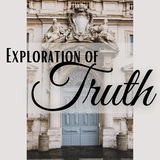Forwarded from Magnetic-Stillness
ELECTRIC⚡️CURRENT
The two top photomicrographs, captured with a high powered microscope, reveal that Walter Russell’s drawings accurately depict the visual image of Electric Current. All matter and form are materialized by this Electric Current. Academic Science has labeled these photos as being “Real Atoms”. Clearly, they look nothing like the nuclear atom we were taught to believe in school. Thankfully, Russellian Science reveals the Truth.
@MagneticStillness
The two top photomicrographs, captured with a high powered microscope, reveal that Walter Russell’s drawings accurately depict the visual image of Electric Current. All matter and form are materialized by this Electric Current. Academic Science has labeled these photos as being “Real Atoms”. Clearly, they look nothing like the nuclear atom we were taught to believe in school. Thankfully, Russellian Science reveals the Truth.
@MagneticStillness
Forwarded from The Exaltation of Beauty
One of the most famous mosaics found in Pompeii and preserved in the Archaeological Museum in Naples is the one known as Memento mori. The mosaic depicts the allegorical and symbolic theme of the transience of life and death - eliminating disparities of social class and wealth. The apex of the composition is a level with its plumb line, a tool that was used by masons to check the correct arrangement of walls. Below the lead we find a skull - usual symbol of death. In succession is a butterfly - symbol of the soul, balancing on a wheel - Fortune. Under the arms of the level, and set against each other in perfect balance, are on the right the symbols of poverty, with a staff, a beggar's purse and a cloak; on the left those of wealth: a scepter, a purple robe and a white stole.
Forwarded from The Exaltation of Beauty
FB_IMG_1667211284495.jpg
281.6 KB
Popular belief has it that the phrase "Memento mori" originated in ancient Rome. In this regard, one of the best-known customs was related to the triumphs of Roman leaders. A slave held up - above the general's head - a laurel wreath whispering to him, "Memento mori, memento te hominem esse, respice post te, hominem te esse memento." That is, "Remember that you must die, remember that you are a man, look around you, remember that you are just a man." The reminder addressed to the triumphant was an invitation not to become self-conceited, as the triumphant was compared to Jupiter and hailed to the point of delirium by the applauding crowd throwing flowers at him.
From ArsEuropa.org
From ArsEuropa.org
Forwarded from 𓂀 Ʀҽ-Ꝁiƞdlɛ ✞hҽ ƒℓΔmϵ 𓂀
I really need to learn latin.
The further I dig, the more images like this I uncover.
The further I dig, the more images like this I uncover.
